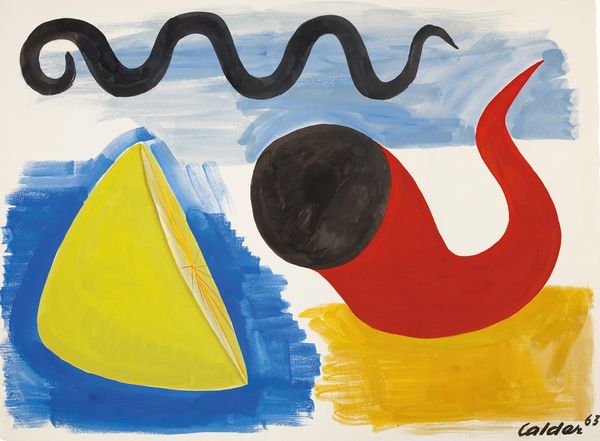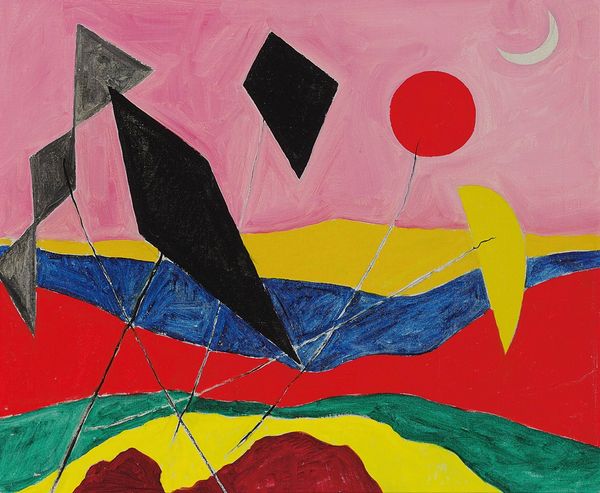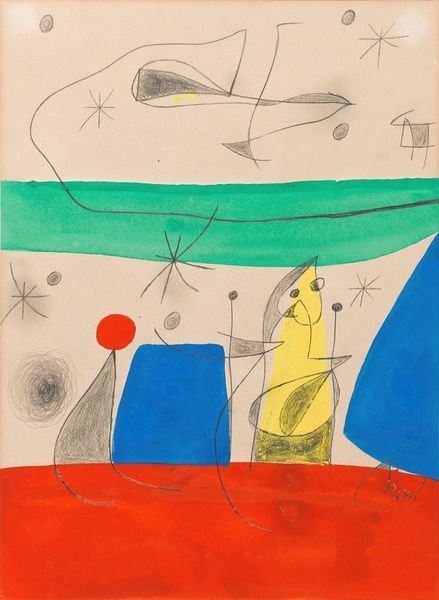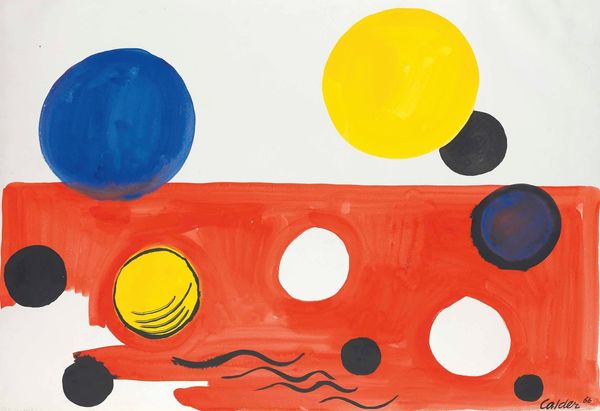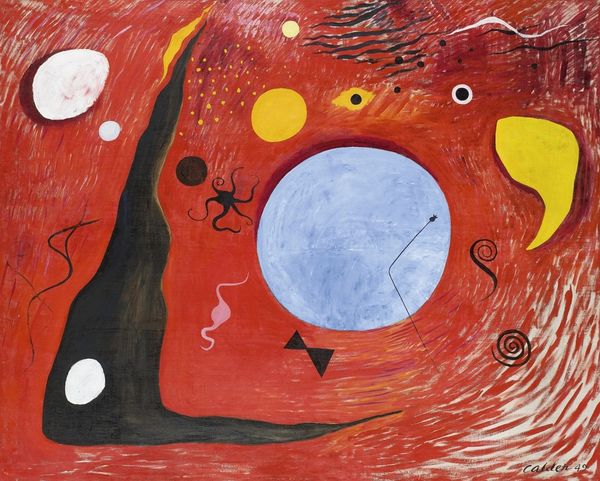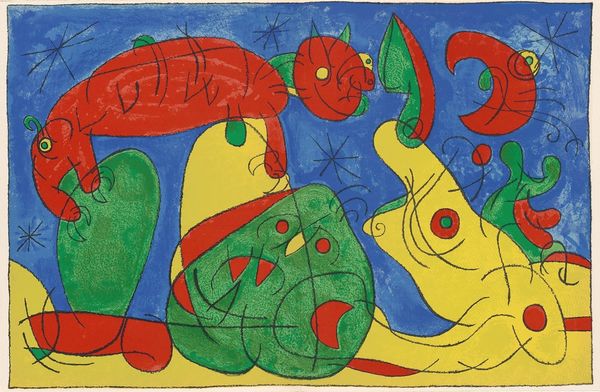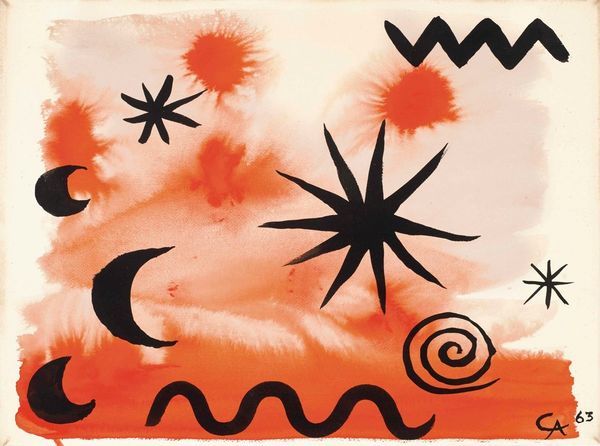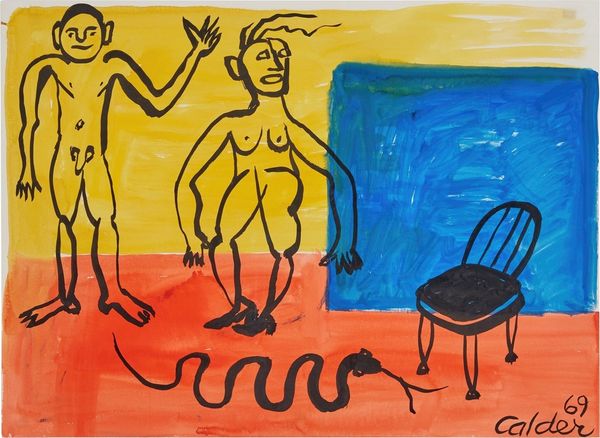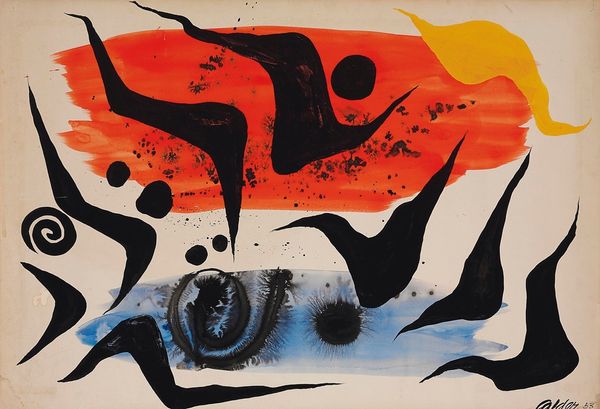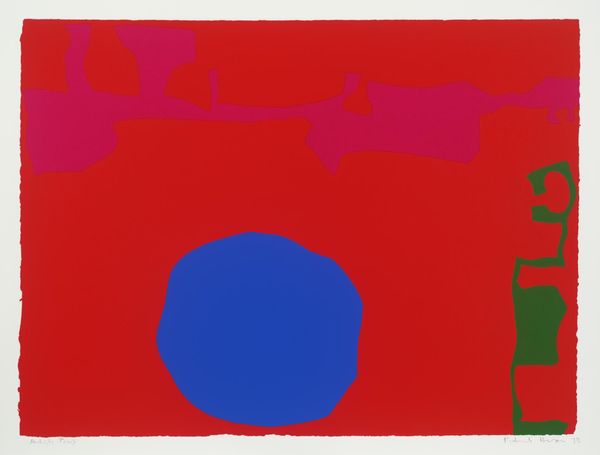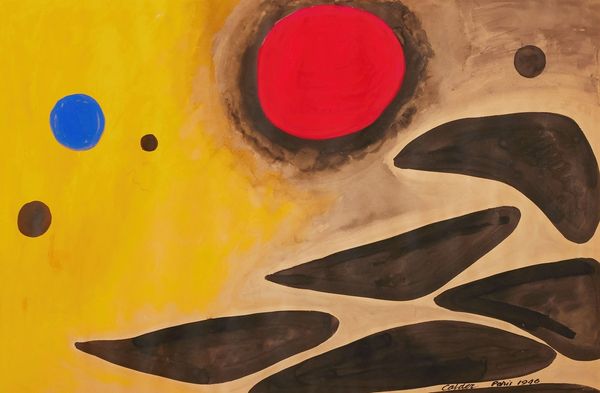
painting, acrylic-paint
#
painting
#
landscape
#
pop art
#
acrylic-paint
#
abstract
#
geometric
#
naive art
#
modernism
Copyright: Modern Artists: Artvee
Editor: Alexander Calder’s acrylic on canvas painting, "Loch Ness," created in 1953, really strikes me with its playful and almost childlike aesthetic. It’s like a visual playground of abstract shapes. What do you make of this piece? Curator: Calder’s turn to painting in the 50s reveals a fascinating intersection between abstract expressionism's rising popularity and the evolving landscape of American identity in the postwar era. Did his biomorphic abstractions offer an escape, or a commentary on society's shifting focus? Consider how Cold War anxieties might have shaped public reception towards seemingly whimsical imagery like this "Loch Ness". What kind of socio-political context might Calder's mobile sculptures bring to mind here? Editor: So, you're suggesting this work, though appearing simple, engages with post-war sentiments? Could these forms reflect the unease and anxieties of the time? Curator: Exactly. This apparent simplicity itself could be a deliberate choice. Naive art enjoyed periodic resurgences as ways to reject prevailing, often academic, styles in painting. Calder uses the symbolic weight and political power of visual art by inverting assumptions. I think there is no easy response to this work. Does Calder embrace the post-war optimism, or is he wryly critiquing it? Or is there perhaps no message, which in itself, is an extremely important statement in the history of 20th century abstract painting. Editor: That makes me see the piece with totally new eyes. I had been approaching it very superficially, but your thoughts give it layers of depth. Thanks! Curator: Indeed! The social context surrounding artwork has a lasting effect on our understanding, and as such, even playful paintings have complex positions and power.
Comments
No comments
Be the first to comment and join the conversation on the ultimate creative platform.
